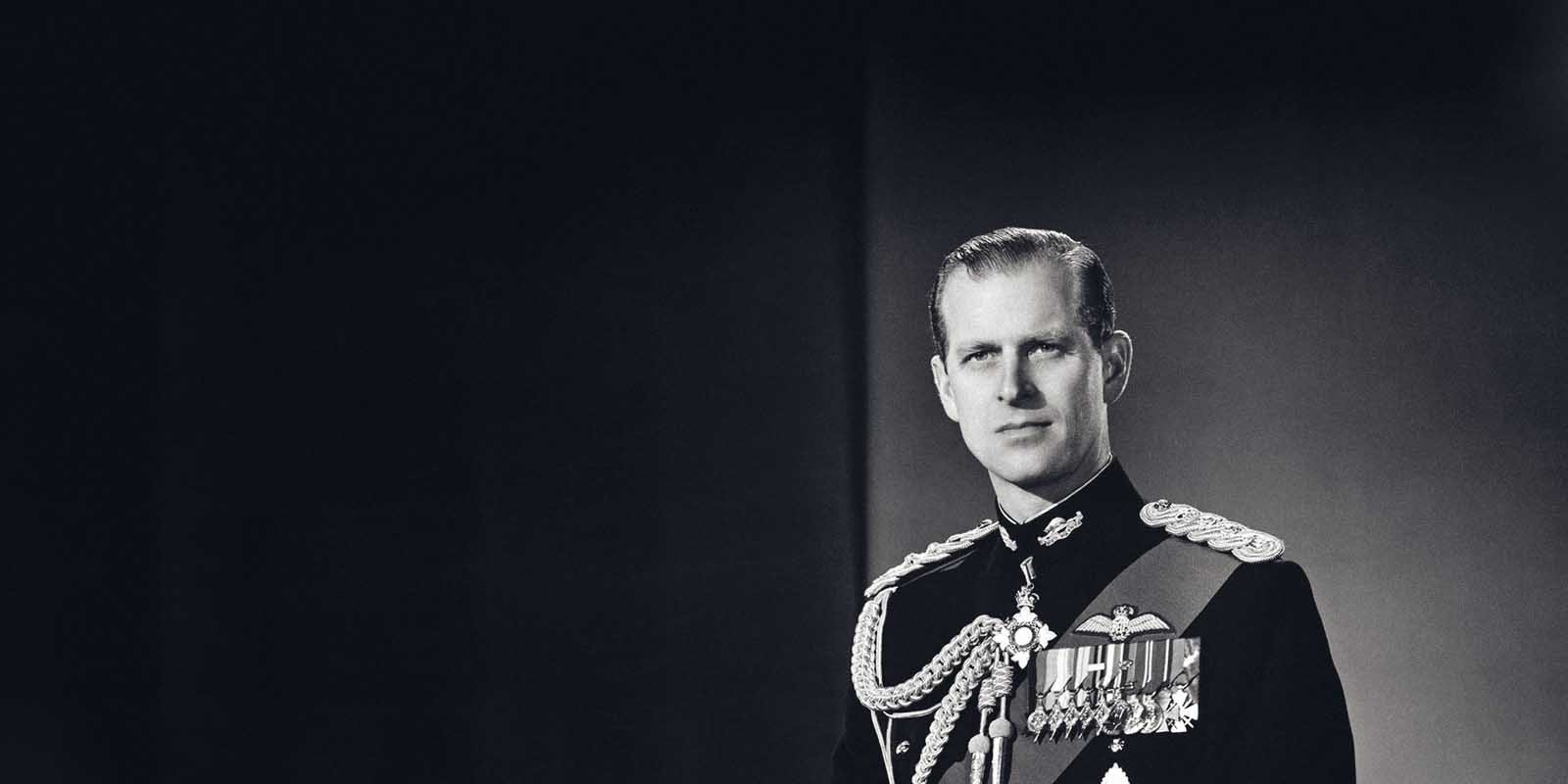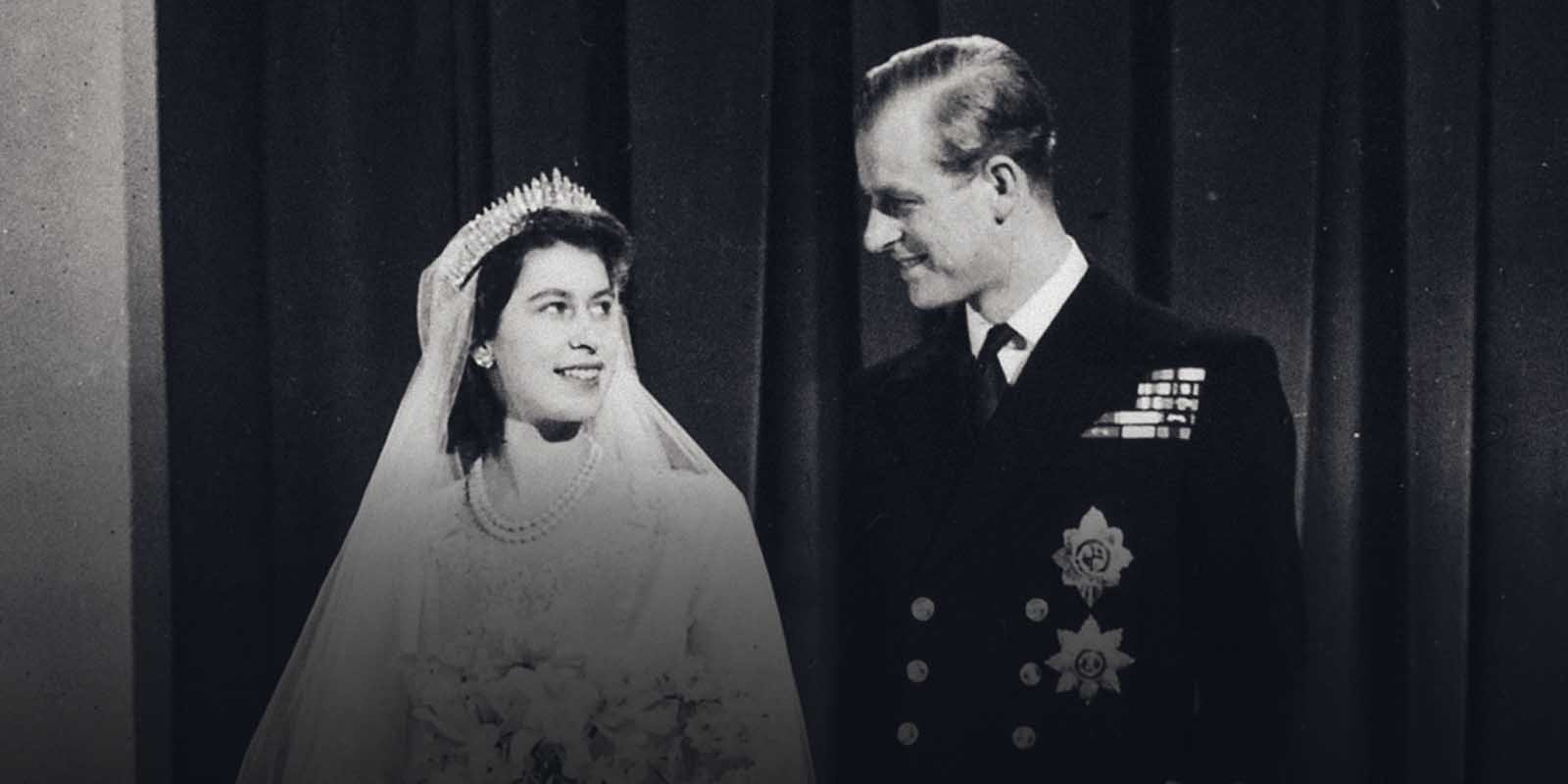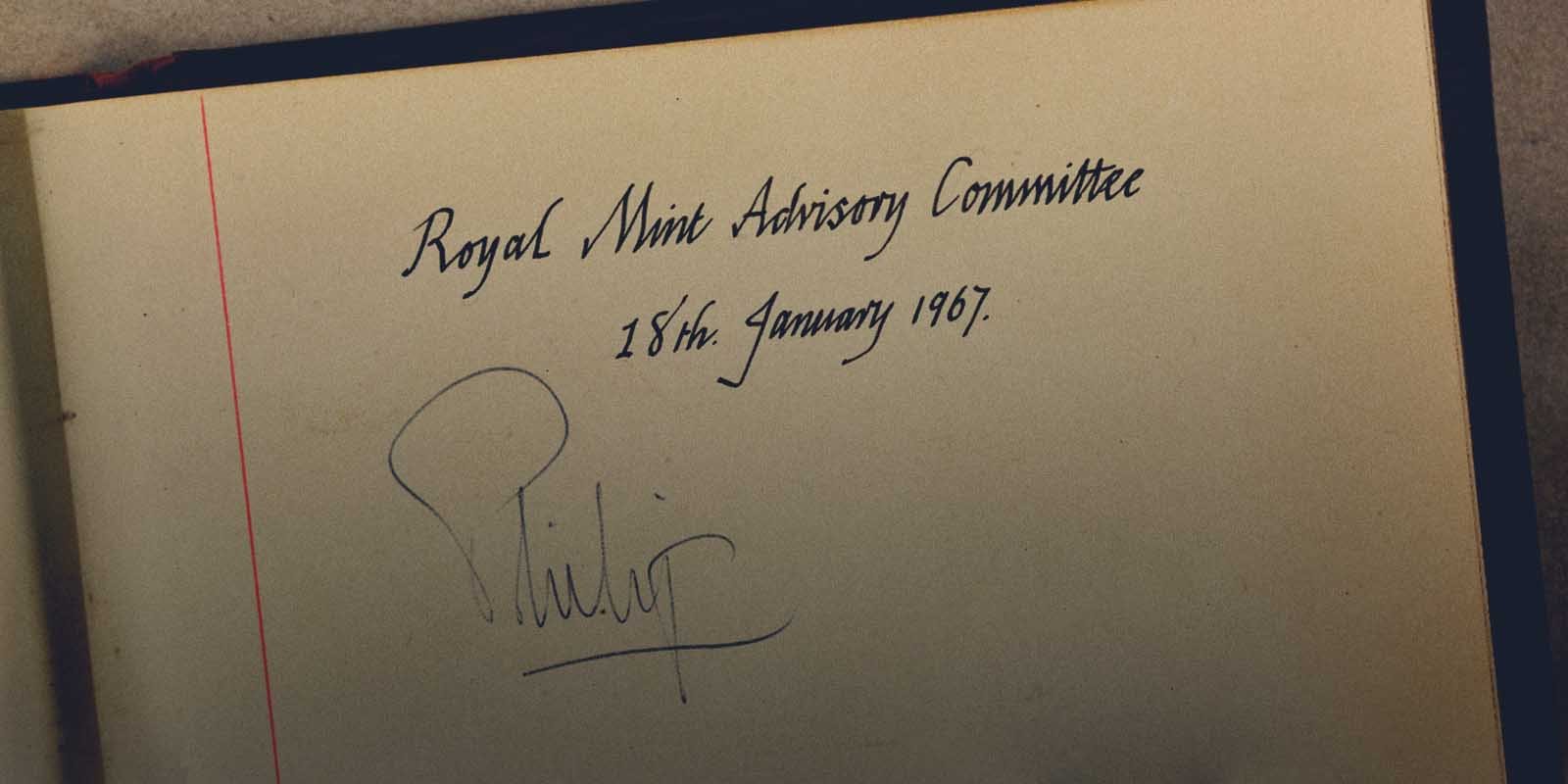The Duke of Edinburgh served as President of The Royal Mint Advisory Committee (RMAC) from 1952 to 1999. Former RMAC Secretary Graham Dyer recounts his memories of this time.
“When I joined The Royal Mint in August 1961 I became aware, almost immediately I think, of the role of Prince Philip as President of The Royal Mint Advisory Committee and of the pride that we all felt in his direct association with us.
“He had occupied this role since the accession of The Queen in 1952 and, in fact, one of my earliest jobs was to draft a review of the work of the Committee in his first ten years as President. The draft must have been pretty awful because the idea of a review was quietly dropped, but I could not have had a better introduction to what the Committee was about.
“It was not, however, until March 1976, when I became Assistant Secretary to the Committee, that I actually witnessed Prince Philip in action. As President he chaired the meetings and it was accordingly his job – not the easiest – to bring the distinguished and diverse members of the Committee to a consensus view on the designs in front of them. I was not sure what to expect, but I quickly became a fan, finding him an efficient and effective chairman, aware that there was an agenda to get through and seemingly with an instinctive sense of the time available for each item on the agenda.
“For their part, members of the Committee were too distinguished to be overly deferential and if, as happened occasionally, he found himself in the minority then he cheerfully gave way. Only once do I remember him pulling rank. This was when a proposal came before the Committee for a crown piece to commemorate the 40th anniversary in 1987 of his marriage to The Queen. Designs had already been obtained from artists but it was immediately obvious that Prince Philip hated the idea. He complained that the Mint evidently did not think he and The Queen would reach their golden wedding anniversary and members were happy to join him in dismissing the idea with good-natured scorn.
“The Committee was something that Prince Philip seemed to enjoy and I remember being told that, busy as he was, a meeting of the Committee was one of the first things to go into his diary each year. Part of the reason for this, I am sure, was that he cared about good design. It was a recurring theme with him that, because coins tended to be round, designs should be circular like the reverses of the 1953 florin and sixpence, rather than having a top and a bottom. He would also say that, in the interests of unity of style and treatment, it was better if obverse and reverse could be designed by the same artist.
“When in the early days the Committee still looked at coins for Commonwealth countries, his knowledge and experience of local customs, of local fauna and flora, proved invaluable. But it was with medals that he really came into his own. No one on the Committee could match his knowledge of medals, decorations and regimental badges and in this respect he could bear comparison with the renowned ability of his father-in-law George VI.
“We were, indeed, very lucky to have his services, given the important matters that came before the Committee during his time as President. At the start he was actively involved in the preparation of the full range of coins, medals and seals required for The Queen’s reign, happy to assist progress by talking to the artists himself. This was followed in the 1960s by the time-consuming development of designs for the new decimal coinage, where his skill and tact were deployed in full measure to avoid confrontation with James Callaghan, then Chancellor of the Exchequer. Subsequent years saw a succession of commemorative coins, of new circulating coins like the £1 and 20 pence, and changing portraits of The Queen, where we had the benefit of knowing that as the portraits took shape Prince Philip was aware of the views of The Queen. Medals remained a special interest and I think he particularly enjoyed seeing the Conspicuous Gallantry Cross work its way through the Committee.

“His Presidency came to an end in 1999 when, conscious of his advancing years, he felt that he should be scaling down his commitments. We were of course keen for him to continue but he could not be persuaded to stay, though he retained an interest in the work of the Committee. This was evident in March 2003 when I stood down as Secretary and Prince Philip did me the honour of attending the farewell lunch that followed my last meeting, driving to Cutlers’ Hall close by St Paul’s Cathedral in his famous black taxi. And even more so in 2008 when he not only agreed to provide a foreword for the official Royal Mint publication inspired by the new reverse designs by Matt Dent but discarded the draft supplied by the Mint and wrote it himself – a personal foreword that will stand as a symbol of his significant contribution to numismatic design.”
– Graham Dyer OBE, Senior Research Curator at The Royal Mint Museum and Assistant Secretary of The Royal Mint Advisory Committee from 1976 to 1996, Secretary 1996 to 2003.




